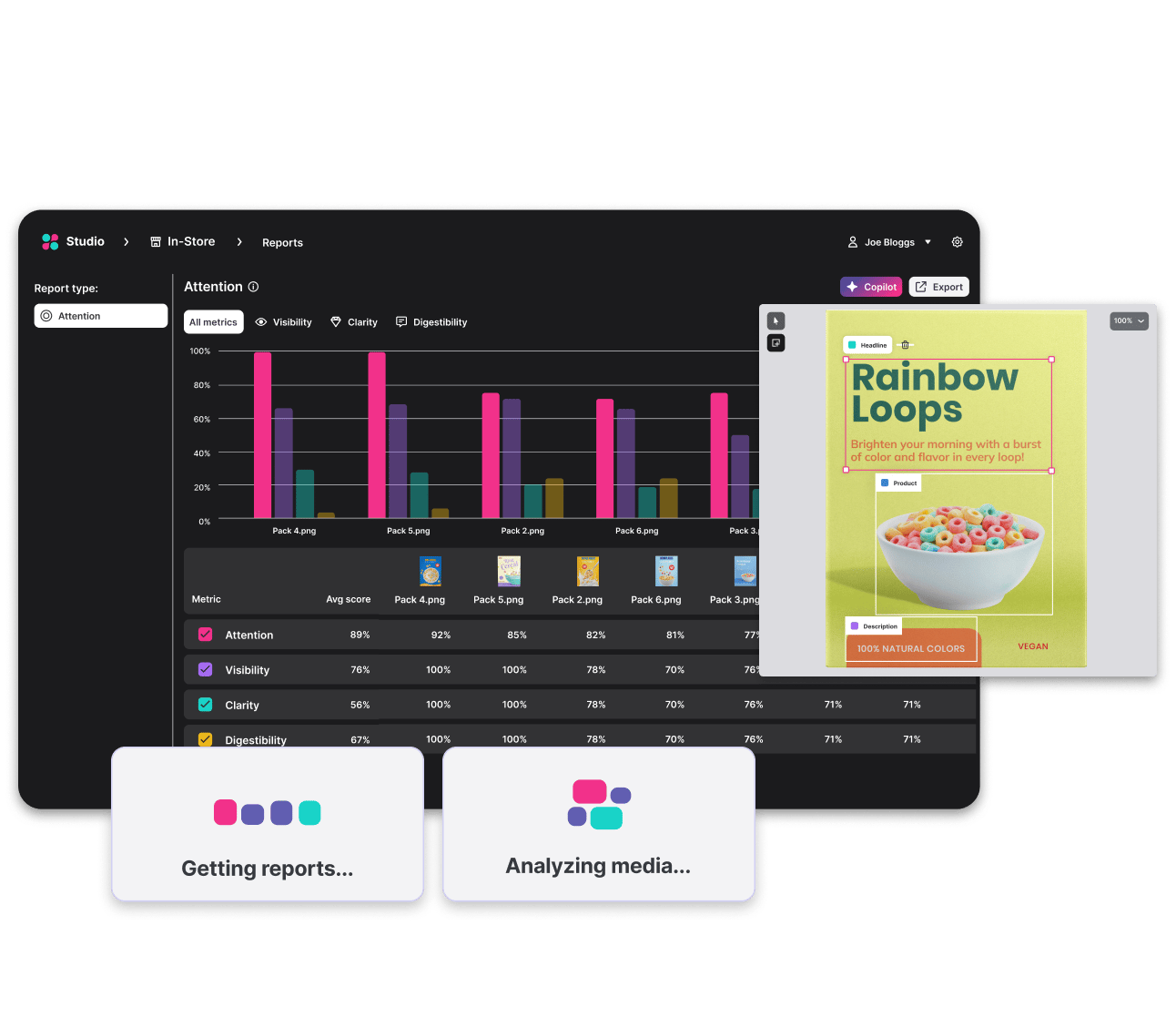Dragonfly AI Visual Intelligence: Complete Buyer's Guide
Predictive visual analytics platform using biologically-inspired algorithms
Dragonfly AI Visual Intelligence is a predictive visual analytics platform that uses biologically-inspired algorithms to forecast consumer attention patterns before creative assets launch. Built on patented technology developed through Queen Mary University research[217][214], the platform replicates human visual cortex processing to predict how consumers will visually engage with packaging, digital ads, and retail displays across real-world contexts.
Market Position & Maturity
Market Standing
Dragonfly AI occupies a specialized position within the visual intelligence market, focusing specifically on attention prediction rather than comprehensive creative testing.
Company Maturity
Customer maturity indicators demonstrate enterprise-grade adoption across established global brands including Beiersdorf, GSK, Diageo, and Vodafone.[213][216][218][219]
Industry Recognition
Industry recognition stems from the platform's academic research foundation and documented customer outcomes rather than analyst awards or venture funding announcements.
Longevity Assessment
Longevity assessment benefits from the academic research foundation and established customer base, though the specialized focus on visual attention prediction creates both differentiation and market size limitations.
Proof of Capabilities
Customer Evidence
Customer evidence spans established brands including Beiersdorf, GSK, Diageo, and Vodafone.[213][216][218][219]
Quantified Outcomes
Birds Eye achieved 26% visibility improvement against competitors and 1.9% year-over-year sales volume growth following packaging redesign driven by Dragonfly's attention heatmaps.[213][217]
Market Validation
Market validation includes successful deployments across 10-20 week optimization periods for full implementation, though basic technical integration requires only 1-2 weeks.[213][216]
Competitive Wins
Competitive wins demonstrate differentiation through biological algorithm approach and embedded workflow integration. Unlike machine-learning competitors requiring audience data, Dragonfly's demographic-neutral predictions suit global campaigns.[220]
Reference Customers
Enterprise adoption patterns span established global brands including GSK, Diageo, and Vodafone.[213][216][218][219]
AI Technology
Dragonfly AI's core technology centers on a patented biological algorithm developed through Queen Mary University research[217][214] that replicates human visual cortex processing to predict attention patterns.
Architecture
Architecture and deployment support multiple integration models from embedded design tools to standalone analysis platforms. The system includes Chrome extensions, mobile apps for in-store analysis, and direct integration capabilities with existing design workflows.[207][212]
Primary Competitors
Primary competitive landscape includes specialized visual intelligence platforms like Attention Insight and Vizit.
Competitive Advantages
Core competitive advantages center on demographic-neutral predictions suitable for global campaigns without local market calibration requirements.[220]
Market Positioning
Market positioning places Dragonfly AI among specialized visual intelligence platforms rather than comprehensive creative testing suites.
Win/Loss Scenarios
Win scenarios favor Dragonfly AI for organizations prioritizing global campaign consistency, embedded workflow integration, and contextual testing capabilities.
Key Features

Pros & Cons
Use Cases
Integrations
Pricing
Featured In Articles
How We Researched This Guide
About This Guide: This comprehensive analysis is based on extensive competitive intelligence and real-world implementation data from leading AI vendors. StayModern updates this guide quarterly to reflect market developments and vendor performance changes.
223+ verified sources per analysis including official documentation, customer reviews, analyst reports, and industry publications.
- • Vendor documentation & whitepapers
- • Customer testimonials & case studies
- • Third-party analyst assessments
- • Industry benchmarking reports
Standardized assessment framework across 8 key dimensions for objective comparison.
- • Technology capabilities & architecture
- • Market position & customer evidence
- • Implementation experience & support
- • Pricing value & competitive position
Research is refreshed every 90 days to capture market changes and new vendor capabilities.
- • New product releases & features
- • Market positioning changes
- • Customer feedback integration
- • Competitive landscape shifts
Every claim is source-linked with direct citations to original materials for verification.
- • Clickable citation links
- • Original source attribution
- • Date stamps for currency
- • Quality score validation
Analysis follows systematic research protocols with consistent evaluation frameworks.
- • Standardized assessment criteria
- • Multi-source verification process
- • Consistent evaluation methodology
- • Quality assurance protocols
Buyer-focused analysis with transparent methodology and factual accuracy commitment.
- • Objective comparative analysis
- • Transparent research methodology
- • Factual accuracy commitment
- • Continuous quality improvement
Quality Commitment: If you find any inaccuracies in our analysis on this page, please contact us at research@staymodern.ai. We're committed to maintaining the highest standards of research integrity and will investigate and correct any issues promptly.